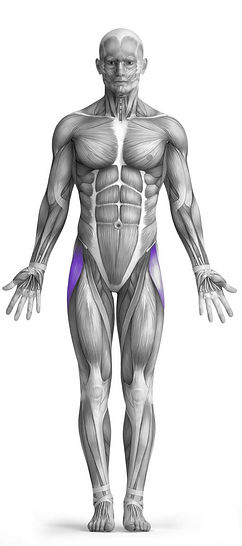Lying Psoas March 101 Video Tutorial
0

Exercise Synopsis
Target Muscle Group
Hip Flexors
Secondary Targets
None
Execution
Compound
Force Type
Pull (Unilateral)
Required Equipment
Band
Fitness Level
Beginner
Variations
None
Alternatives
None
Timer
Hour
Minute
Second
Stopwatch
00:00:00:00
Overview
The "Lying Psoas March" is an effective exercise designed to target the hip flexors, specifically the psoas muscle. This exercise is performed by lying on your back while securing a resistance band around your feet, then alternating leg raises while maintaining a controlled movement. The goal is to engage the hip flexors as the legs are lifted, without relying on other muscle groups. The band adds resistance, making the exercise more challenging and helping to activate the hip flexors more intensely. This movement can be used to improve core stability and strengthen the hip flexors, which are vital for movements like walking and running.
How to Perform
Start by lying flat on your back with a resistance band looped around the soles of your feet, and your arms resting at your sides.
As you exhale, extend one leg straight while keeping the other leg bent, ensuring your core stays engaged throughout the movement.
Slowly return the extended leg to its starting position while maintaining control over your body.
Repeat the motion on the opposite side, extending the other leg and keeping the other bent, and continue alternating legs for the desired number of reps.
★ Bonus: For exercises that involve external weights (such as dumbbells, barbells, or machines), the One Rep Max (1RM) calculator can help you estimate your maximum lifting capacity. Use it to track your strength progress and adjust your training for optimal results.
Tips
Avoid arching your lower back excessively as you extend your leg to prevent strain on your spine.
Focus on fully extending the leg horizontally, without pushing it upward toward the ceiling, while keeping your hip in a flexed position.
If you struggle with maintaining a neutral spine during the movement, try gently lifting your head off the ground. This can help activate your anterior core for better stability.
Make sure to exhale as you lower your leg, as this will further engage your core muscles and support better control throughout the exercise.
How Not to Perform
Avoid Overarching the Lower Back
Do not let your lower back arch excessively as you extend your leg. This can place unnecessary strain on your spine and reduce the effectiveness of the exercise. Keep your lower back pressed gently into the floor throughout the movement.
Don’t Use Momentum
Refrain from swinging your leg or jerking it into extension. Focus on slow, controlled movements to ensure that the target muscles, the hip flexors, are properly engaged. Using momentum will waste energy and take the focus away from the intended muscles.
Don’t Lift the Leg Towards the Ceiling
Make sure to extend the leg horizontally, not upwards. Raising the leg toward the ceiling takes the emphasis away from the hip flexors and can involve other muscles unnecessarily.
Avoid Letting the Core Relax
Don’t allow your core to relax as you perform the exercise. Engage your abdominal muscles to help maintain a stable position and prevent your lower back from arching. A weak core can lead to improper form and discomfort.
Do Not Rush the Movement
Avoid performing the exercise too quickly. Rapid leg extensions won’t activate the hip flexors effectively and may lead to poor posture. Slow down and focus on proper form with each rep.
Don’t Forget to Breathe Properly
Ensure that you are exhaling as you lower the extended leg. Holding your breath can lead to tension and reduce the effectiveness of your core activation. Controlled breathing helps maintain focus and proper muscle engagement.
Don’t Let the Legs Move Simultaneously
Perform the exercise one leg at a time. Moving both legs together reduces the focus on each leg’s hip flexor and can cause your body to shift unnecessarily. Alternate your leg extensions to isolate and activate the hip flexors properly.
Variations
Variations of fitness exercises refer to different ways of performing a specific exercise or movement to target various muscle groups, intensities, or goals. These variations aim to challenge the body differently, prevent plateaus, and cater to individuals with varying fitness levels.
Alternatives
Alternative exercises in fitness refer to different movements or activities that target similar muscle groups or serve the same training purpose as the primary exercise. These alternative exercises can be used as substitutes when the original exercise is unavailable or challenging to perform due to various reasons such as equipment limitations, injuries, or personal preferences.



